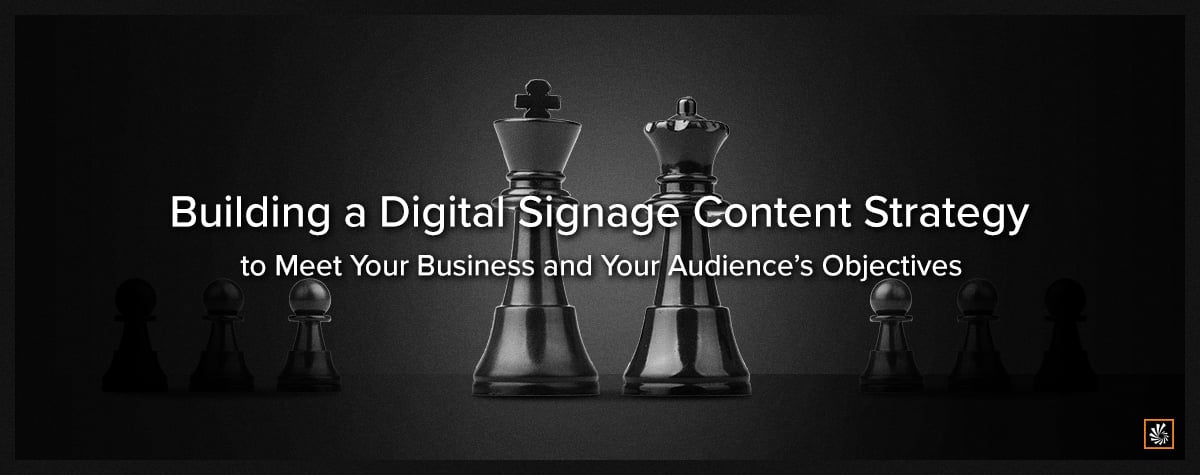Digital Signage Content Management System or Content Creation?
With the rising emphasis on customer experience, today’s retailers are scrambling to find ways to elevate the experiences they provide their in-store shoppers. Indeed, often it is unique customer experiences (CX) that differentiate one retailer from another. With half of today’s shoppers still preferring in-person purchases, a premium in-store CX can mean the difference between engaging a shopper or losing them to the competition. That’s why we often talk about the importance of creating quality content for retailer’s digital signage displays.
Of course, the need for engaging digital signage content goes far beyond the retail realm. We’ve recently explored the importance of digital signage in raising and maintaining employee engagement, providing better corporate communications, delivering flexible employee training, and fostering overall corporate transparency—and that’s just for starters. All these applications and many more require organizations to create unique content in numerous formats to engage different audiences—shoppers, employees, or users—and that content must be top notch when it reaches those audiences via digital displays, or they’ll simply walk on by.
With all the focus on content creation, though, it’s easy to forget there are many steps in between content production and effective content delivery. That’s when many organizations learn the hard way that the quality of their digital signage content management system (CMS) is just as important, if not more so, than the quality of the content itself.
CMS: Your link between digital content and digital signage
Your organization can create the most engaging content for digital signage devices—true digital experiences—yet if you can’t manage and deploy that content properly, your audience can’t enjoy it. Moreover, without the proper CMS technology, your content options could be severely limited. That’s why the heart and soul of the digital signage network is the software, a digital signage platform that provides not just basic content management functionality but the flexibility to meets all your content scheduling needs.
At a minimum, a digital signage CMS should provide the ability to:
- Upload your digital content once it’s created
- Store and organize it
- Manage your content library (including versioning and tagging)
- Transmit it to your digital signage devices
- Schedule your content playback for not only now but well into the future
The scheduling component may seem fairly basic on the surface when, in fact, it is anything but. A comprehensive CMS must allow you to schedule different content feeds on different devices based on the intended audience at various times of the day. It should also allow you to intelligently intersperse ad content (your own or from other feeds) based on a variety of criteria, variables, and content tags.
Tagging is important for a number of reasons, such as identifying content types and appropriate audiences. Tagging helps you sort and locate related or complementary content, which, in turn, allows you to determine which content is played on which screens.
Features like these are the core essentials for an effective digital signage CMS, yet as we’ll discuss in future posts, they can be combined with reporting, device management, analytics and more to provide a far more comprehensive CMS solution (such as ReflectView).
Today’s digital signage content management system has to deliver more
Without even a basic content management system, your signage network is just content and devices without much more than the ability to display content on a loop—which provides your audience a pretty static experience. Providing the capabilities described above, though, is really just the minimum these days—the table stakes, as they say, for a digital signage CMS. For a truly high-performing digital signage network with a high return on investment, you need much more than table stakes.
Next time, we’ll explore some of the beyond-the-basics CMS functionality that figures into an effective digital signage strategy. Meanwhile, you can visit our ReflectView product page or download our product sheet to explore some these elements today.
Share this
You May Also Like
These Related Stories

What Is a Digital Signage Content Management System?

Building a Digital Signage Content Strategy to Meet Your Business’ and Your Audience’s Objectives


